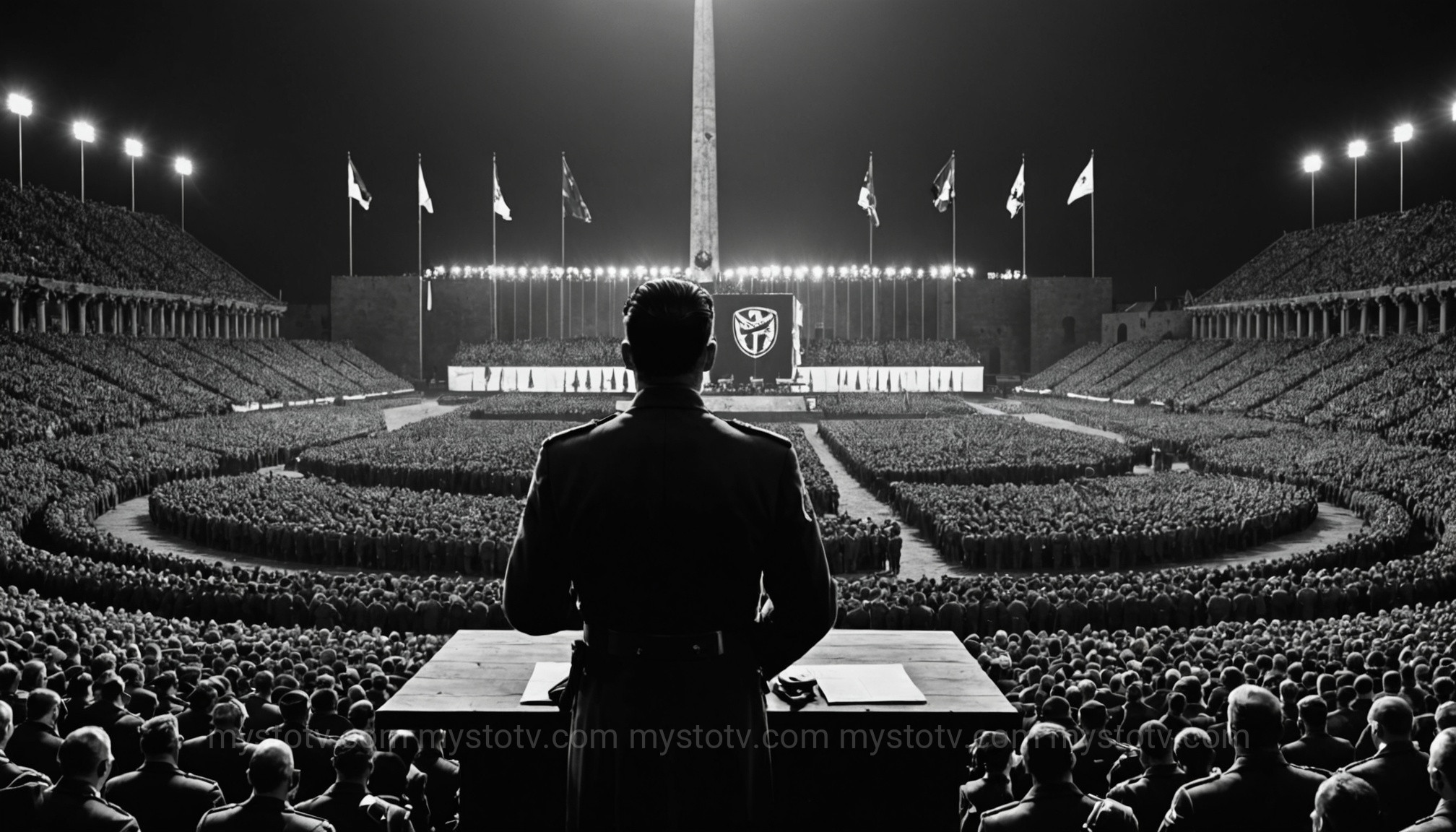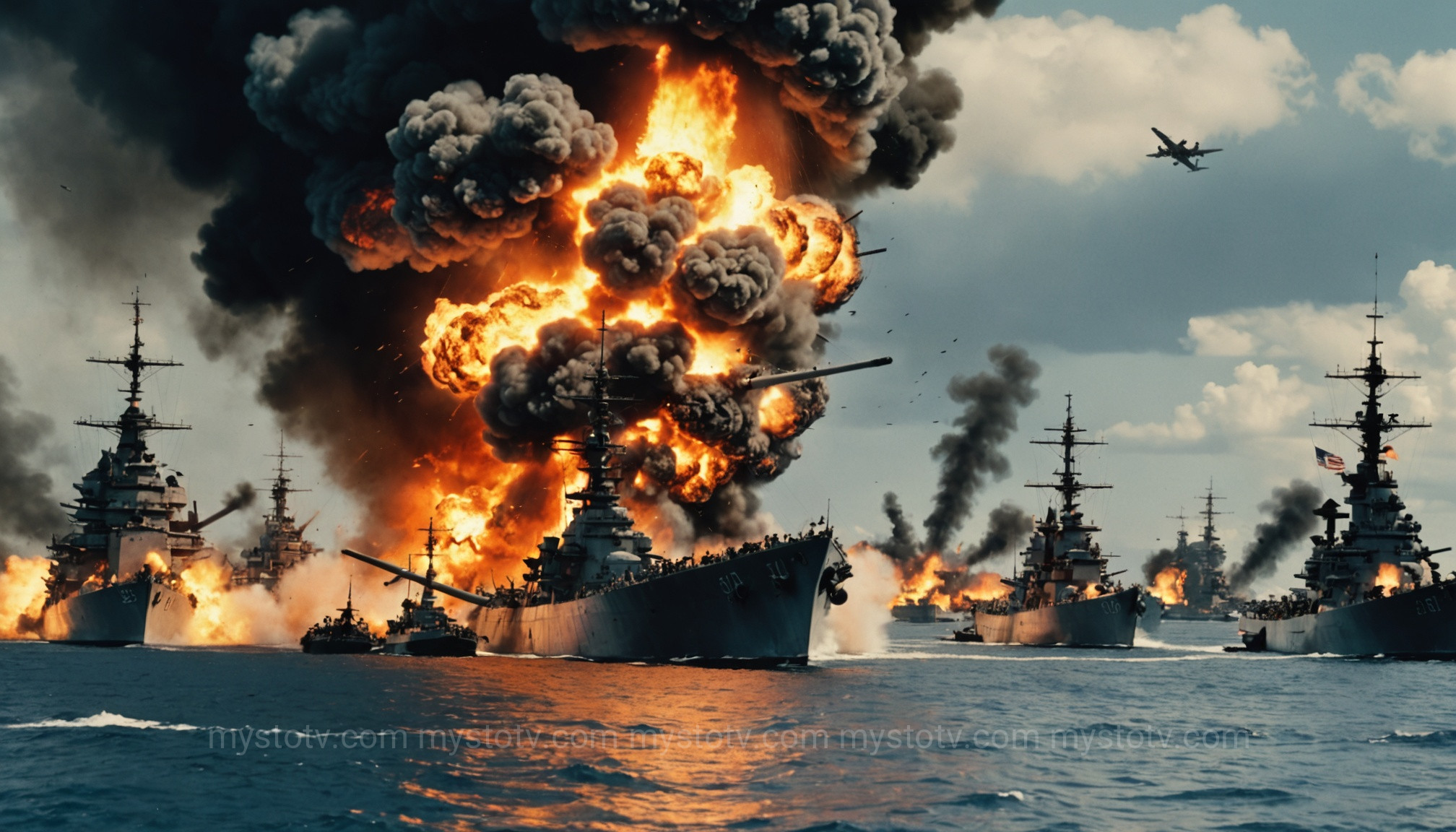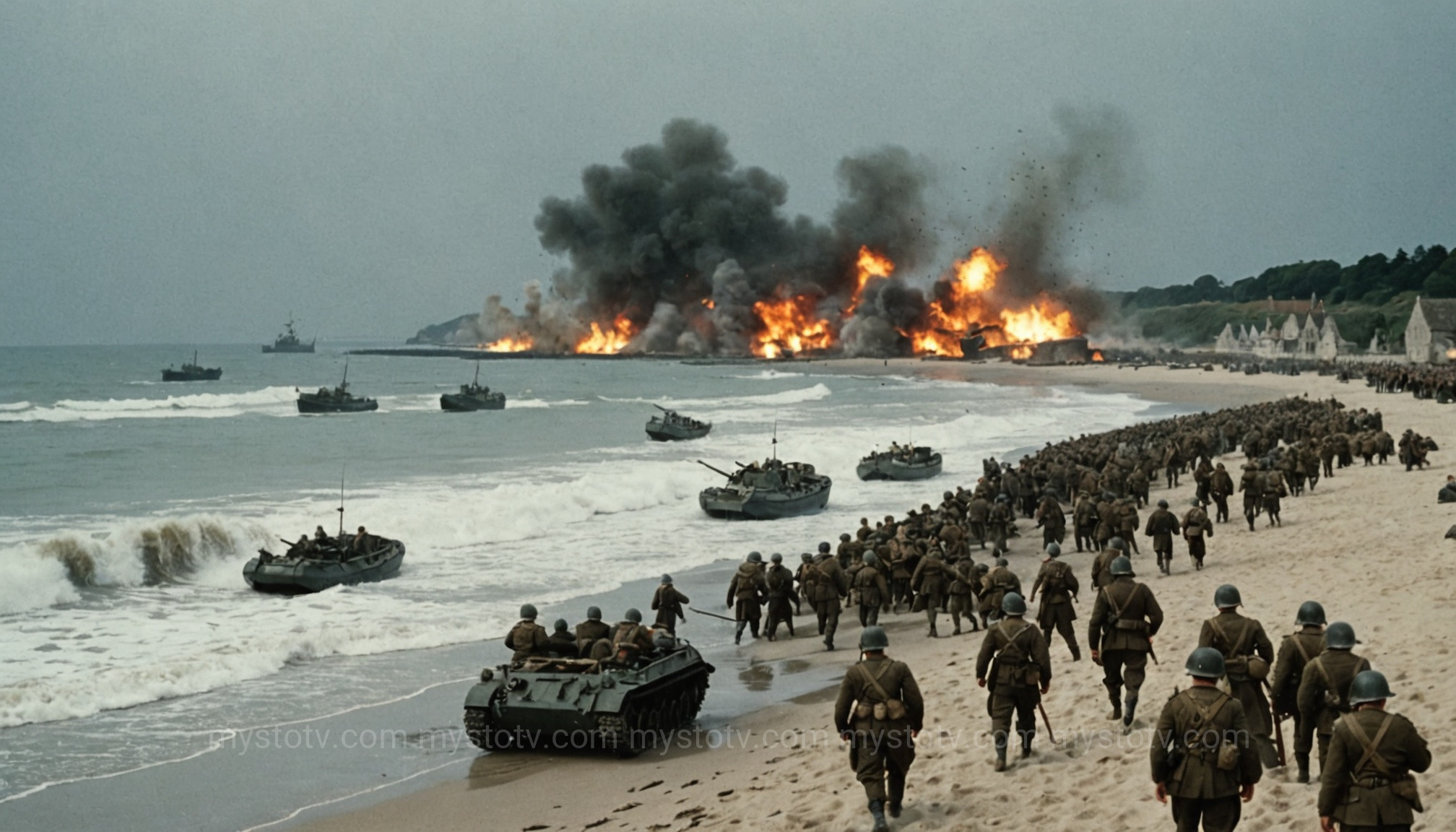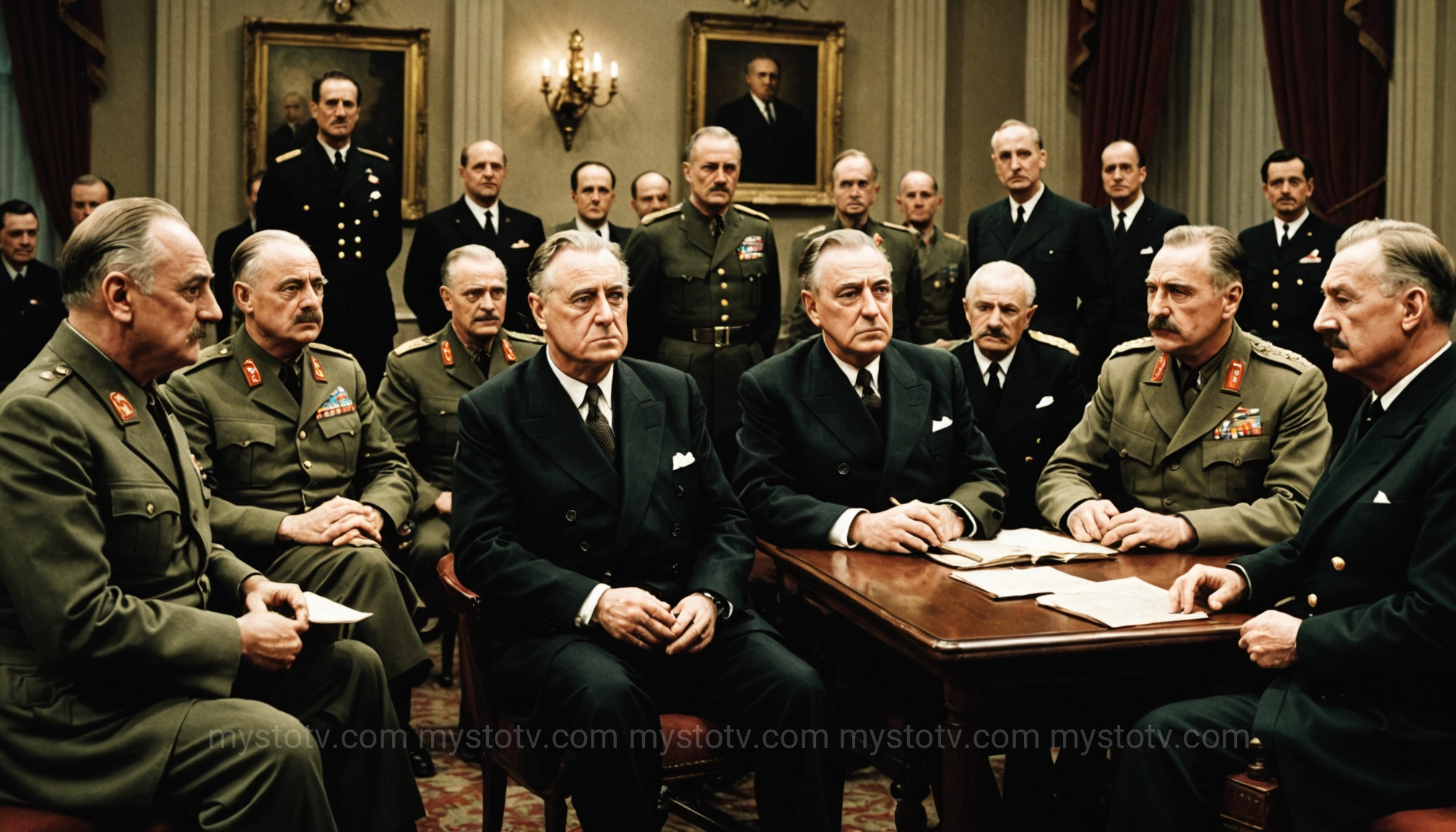Contents
- 1 The Seeds of Conflict: A Pre-War World War 2 Timeline (1933-1939)
- 2 The War Ignites: A European World War 2 Timeline (1939-1941)
- 3 A Global Conflict: A Widening World War 2 Timeline (1941-1943)
- 4 The Tide Turns: An Allied Offensive World War 2 Timeline (1943-1944)
- 5 Endgame and Aftermath: The Final World War 2 Timeline (1945)
- 6 Conclusion
- 7 References
The Seeds of Conflict: A Pre-War World War 2 Timeline (1933-1939)

The devastation of World War II did not erupt from a vacuum. The 1930s were a decade of simmering tensions, economic despair, and rising extremist ideologies that set the stage for global conflict. Understanding this pre-war period is crucial for any complete world war 2 timeline. The Treaty of Versailles, which ended World War I, imposed harsh penalties on Germany, leading to economic hardship and national humiliation—fertile ground for radical movements. Across the globe, the Great Depression destabilized economies and governments, making authoritarian promises of stability and national glory dangerously appealing.
This era was defined by the aggressive expansionism of the Axis powers—Germany, Italy, and Japan—and the policy of appeasement adopted by Western democracies like Britain and France. Haunted by the memory of World War I, they sought to avoid another catastrophic war by conceding to the demands of dictators. This strategy, however, only emboldened the aggressors, signaling that their violations of international law would go unchallenged.
The Rise of Totalitarianism in this World War 2 Timeline
In Germany, Adolf Hitler and the Nazi Party rose to power in 1933, swiftly dismantling democratic institutions and rebuilding the German military in direct violation of the Versailles Treaty. In Italy, Benito Mussolini’s fascist regime dreamed of a new Roman Empire, invading Ethiopia in 1935. Meanwhile, in Asia, Imperial Japan had already begun its expansionist campaign, invading Manchuria in 1931 and launching a full-scale invasion of China in 1937. These actions were clear indicators of their aggressive ambitions.
Key Events of Appeasement and Aggression
The timeline of the late 1930s is a steady drumbeat of unchecked aggression. In March 1938, Germany annexed Austria in the Anschluss. This was followed by the Munich Agreement in September 1938, where Britain and France agreed to Germany's annexation of the Sudetenland, a region of Czechoslovakia, in a desperate bid to maintain peace. British Prime Minister Neville Chamberlain famously declared he had secured "peace for our time." This proved tragically wrong. In March 1939, Hitler violated the agreement and seized the rest of Czechoslovakia. Finally, the signing of the Molotov-Ribbentrop Pact—a non-aggression treaty between Nazi Germany and the Soviet Union—in August 1939 removed the last major obstacle to Hitler's invasion of Poland. The pact included a secret protocol to divide Poland and other parts of Eastern Europe between them, making war inevitable.
The War Ignites: A European World War 2 Timeline (1939-1941)
The period from 1939 to 1941 marks the explosive beginning of the Second World War in Europe. The initial phase of this world war 2 timeline is characterized by the shocking speed and effectiveness of Germany's new military doctrine, the blitzkrieg, or "lightning war." This strategy, combining coordinated air power, armored divisions, and infantry, was designed to create psychological shock and disorganization in enemy forces, allowing for rapid advances and decisive victories before an opponent could fully mobilize. The initial Allied response was often too slow and conventional to counter this revolutionary approach to warfare.
The "Phoney War"—a period of relative inaction on the Western Front following the invasion of Poland—lulled some into a false sense of security. However, this calm shattered in the spring of 1940, as Germany unleashed its military might across Western Europe, leading to a series of stunning Axis victories that redrew the map of the continent and left Britain standing alone against a Nazi-dominated Europe.
The Invasion of Poland and the Start of the War
On September 1, 1939, Germany invaded Poland, the event that formally began World War II. Honoring their alliance with Poland, Great Britain and France declared war on Germany two days later. Despite the declarations, they could offer little direct military assistance. The Soviet Union invaded eastern Poland on September 17, as secretly agreed upon in the Molotov-Ribbentrop Pact. By early October, Poland was completely overrun and partitioned between Germany and the USSR.
The Fall of France and the Battle of Britain in this Timeline
After the winter lull, the German war machine roared back to life in April 1940, invading Denmark and Norway. The main event began in May, with the invasion of France and the Low Countries (Belgium, Netherlands, and Luxembourg). German forces bypassed the heavily fortified Maginot Line, trapping British and French forces at Dunkirk. The legendary evacuation, known as Operation Dynamo, rescued over 338,000 Allied soldiers but left behind immense quantities of equipment. By June 22, 1940, France had surrendered, a shocking defeat for a major world power.
With France defeated, Hitler turned his attention to Great Britain. The Battle of Britain, fought in the skies from July to October 1940, was a pivotal moment. The German Luftwaffe sought to gain air superiority as a prelude to a sea invasion (Operation Sea Lion). However, the resilience of the Royal Air Force (RAF), aided by radar technology and the bravery of its pilots, thwarted Hitler's plans. It was Germany's first major defeat and ensured Britain remained a base for future Allied operations.
A Global Conflict: A Widening World War 2 Timeline (1941-1943)
The year 1941 was a watershed moment, transforming the European conflict into a true world war. This phase of the world war 2 timeline is defined by two monumental strategic decisions that ultimately sealed the fate of the Axis powers. First, Hitler's ideological obsession with destroying communism led him to launch a surprise invasion of the Soviet Union, a move that opened a vast and grueling Eastern Front. Second, Japan's imperial ambitions in the Pacific culminated in a surprise attack on the United States, bringing the industrial might of America into the war.
The analysis of this period reveals critical overreach by the Axis. They were now fighting a two-front war against the combined resources of the British Empire, the Soviet Union, and the United States—an alliance with overwhelming industrial and demographic advantages. While 1942 saw the Axis powers at the zenith of their territorial expansion, it also contained the seeds of their demise, as key battles began to shift the strategic initiative to the Allies.
Operation Barbarossa: Germany's Fateful Turn East
On June 22, 1941, Hitler broke the non-aggression pact and launched Operation Barbarossa, a massive invasion of the Soviet Union involving three million German soldiers. Initially, the invasion was incredibly successful, with German forces advancing hundreds of miles and capturing millions of Soviet prisoners. Hitler expected a swift victory before winter. However, the vast distances, stiffening Soviet resistance, and the brutal Russian winter halted the German advance just short of Moscow. This decision opened a war of attrition on the Eastern Front that would consume the bulk of Germany's military resources for the rest of the war. The failure to defeat the USSR in 1941 is widely considered Hitler's single greatest strategic blunder.
The Attack on Pearl Harbor and America's Entry

While Germany was bogged down in Russia, tensions were escalating in the Pacific. To fuel its war in China and expand its "Greater East Asia Co-Prosperity Sphere," Japan needed oil and other resources. When the United States imposed an oil embargo to curb Japanese aggression, Japan's leadership made a fateful decision. On December 7, 1941, the Imperial Japanese Navy launched a surprise attack on the U.S. naval base at Pearl Harbor, Hawaii. The attack was devastating, but it failed to destroy the American aircraft carriers, which were at sea. The next day, President Franklin D. Roosevelt called it "a date which will live in infamy," and the U.S. declared war on Japan. Germany and Italy, in turn, declared war on the United States, officially uniting the European and Pacific conflicts.
The Turning Points: Stalingrad and Midway
The year 1942 was a year of pivotal battles that began to turn the tide. In the Pacific, the Battle of Midway (June 1942) was a decisive naval victory for the United States. Having broken Japanese naval codes, the U.S. Navy was able to ambush the Japanese fleet, sinking four of its aircraft carriers. This victory crippled the Japanese Navy and marked the end of its expansion in the Pacific.
On the Eastern Front, the Battle of Stalingrad (August 1942 – February 1943) became a brutal symbol of the war's attrition. The German Sixth Army's attempt to seize the city devolved into horrific urban warfare. In November, a massive Soviet counter-offensive, Operation Uranus, encircled the German army. Despite Hitler's orders to fight to the last man, the freezing and starving remnants of the Sixth Army surrendered. Stalingrad was a catastrophic defeat for Germany, both in terms of manpower and morale, from which it would never fully recover.
The Tide Turns: An Allied Offensive World War 2 Timeline (1943-1944)
With victories at Stalingrad and Midway, the strategic initiative shifted firmly to the Allies. This period of the world war 2 timeline is defined by a massive buildup of Allied industrial and military power and the launch of major offensives on multiple fronts. The "Big Three"—Roosevelt, Churchill, and Stalin—coordinated their grand strategy at a series of high-level conferences, such as the Tehran Conference in late 1943, where they agreed to open a second front in Western Europe. The primary Allied strategy in Europe was "Germany First," focusing the bulk of their resources on defeating Nazi Germany while fighting a holding action in the Pacific.
Analysis of this phase shows the Allied war machine operating at full capacity. The "Battle of the Atlantic," the long struggle against German U-boats, was largely won by mid-1943, securing the vital supply lines from North America to Britain. This logistical victory was the essential prerequisite for launching a large-scale invasion of continental Europe. In the Pacific, the U.S. began its "island-hopping" campaign, systematically capturing key islands to use as stepping stones for an eventual invasion of Japan.
The Italian Campaign and the "Soft Underbelly"
Following their victory in North Africa (Operation Torch), the Allies launched an invasion of Sicily in July 1943, followed by an invasion of the Italian mainland in September. Winston Churchill referred to Italy as the "soft underbelly of Europe," hoping for a relatively quick campaign. However, the mountainous terrain and determined German resistance made the advance up the Italian peninsula a slow and costly slog. Nonetheless, the campaign successfully knocked Italy out of the war (Mussolini was overthrown), forced Germany to divert divisions to Italy, and secured airbases from which the Allies could bomb Germany and the Balkans.
The Normandy Landings (D-Day) in the Timeline

The most anticipated event of the war was the Allied invasion of France. On June 6, 1944, known as D-Day, Operation Overlord commenced. It was the largest amphibious invasion in history, with over 156,000 American, British, and Canadian troops landing on five beaches in Normandy. Despite facing fierce resistance, especially on Omaha Beach, the Allies established a secure beachhead. This opened the long-awaited second front, forcing Germany into a hopeless war on three fronts—in France, Italy, and the Soviet Union. The war's origins, which seemed so distant, were now coming full circle as Allied forces pushed toward Germany itself. You can find more details on this in the pre-war timeline section.
Endgame and Aftermath: The Final World War 2 Timeline (1945)

The final year of the war was a period of relentless Allied advances and the final, brutal collapse of the Axis powers. This concluding section of the world war 2 timeline details the endgame in both the European and Pacific theaters. As Allied armies closed in on Germany from the west and the Soviets advanced from the east, the true horror of the Nazi regime was laid bare with the liberation of concentration and extermination camps like Auschwitz and Dachau. The Holocaust, the systematic genocide of six million Jews and millions of others, became a stark testament to the depravity the war was fought to destroy.
The end of the war was not the end of the story. The decisions made by the Allied leaders at conferences like Yalta (February 1945) and Potsdam (July-August 1945) would shape the post-war world order. These meetings revealed growing rifts between the Soviet Union and the Western Allies, setting the stage for a new kind of global conflict: the Cold War.
The Battle of the Bulge and the Fall of Berlin
In a final, desperate gamble, Hitler launched a major counter-offensive in the Ardennes forest in December 1944. The Battle of the Bulge was the costliest battle for the U.S. Army in the war, but the German offensive ultimately failed, depleting Germany's last reserves. By the spring of 1945, the end was near. Allied forces crossed the Rhine River in March, while Soviet forces began their final assault on Berlin in April. On April 30, 1945, with Soviet troops just blocks from his bunker, Adolf Hitler committed suicide. Germany officially surrendered on May 8, 1945, a day celebrated as Victory in Europe (V-E) Day.
The Atomic Bomb and the Surrender of Japan
Though the war in Europe was over, the fight against Japan continued. The battles for Iwo Jima and Okinawa in early 1945 demonstrated the ferocity of Japanese resistance and the horrific casualties an invasion of mainland Japan would entail. To avoid such a bloodbath and force a swift surrender, U.S. President Harry S. Truman, who took office after Roosevelt's death in April, made the decision to use the newly developed atomic bomb. On August 6, 1945, an atomic bomb was dropped on the city of Hiroshima. Three days later, with Japan still not surrendering, a second bomb was dropped on Nagasaki. Faced with this unprecedented destructive power and a Soviet invasion of Manchuria, Emperor Hirohito intervened. Japan formally surrendered on September 2, 1945, aboard the USS Missouri in Tokyo Bay, officially ending World War II.
Conclusion
From the aggressive expansionism of the 1930s to the final surrenders in 1945, the world war 2 timeline is a powerful narrative of human ambition, folly, and resilience. It is a story that unfolds through a chain of interconnected events: the failure of appeasement enabled initial aggression; the blitzkrieg's success led to a Nazi-dominated Europe; Hitler's invasion of the USSR and Japan's attack on Pearl Harbor created a global conflict the Axis could not win; and the overwhelming industrial might of the Allies, culminating in D-Day and the atomic bomb, brought about the final victory. More than a historical record, this timeline serves as a critical lesson on the fragility of peace and the devastating consequences of unchecked tyranny. It shaped the 20th century by dissolving empires, creating new superpowers, establishing international institutions like the United Nations, and ushering in the nuclear age, forever changing the landscape of global politics and warfare.
References
- Keegan, John. The Second World War. Penguin Books, 2005.
- The National WWII Museum, New Orleans. "The War." https://www.nationalww2museum.org/war
- Imperial War Museums. "What you need to know about the Second World War."
- United States Holocaust Memorial Museum. "Introduction to the Holocaust." https://encyclopedia.ushmm.org/content/en/article/introduction-to-the-holocaust
- Encyclopædia Britannica. "World War II." Last updated Nov 17, 2023. https://www.britannica.com/event/World-War-II